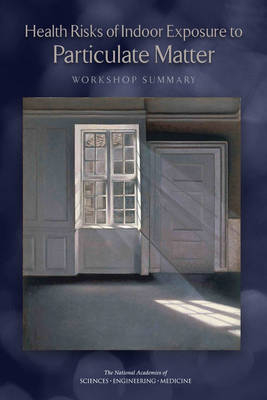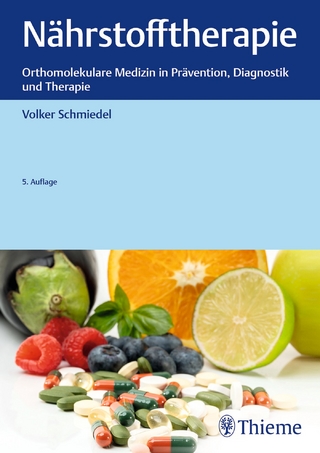
Health Risks of Indoor Exposure to Particulate Matter
Workshop Summary
Seiten
2016
National Academies Press (Verlag)
978-0-309-44362-3 (ISBN)
National Academies Press (Verlag)
978-0-309-44362-3 (ISBN)
The U.S. Environmental Protection Agency (EPA) defines PM as a mixture of extremely small particles and liquid droplets comprising a number of components, including "acids (such as nitrates and sulfates), organic chemicals, metals, soil or dust particles, and allergens (such as fragments of pollen and mold spores)". The health effects of outdoor exposure to particulate matter (PM) are the subject of both research attention and regulatory action. Although much less studied to date, indoor exposure to PM is gaining attention as a potential source of adverse health effects. Indoor PM can originate from outdoor particles and also from various indoor sources, including heating, cooking, and smoking. Levels of indoor PM have the potential to exceed outdoor PM levels.
Understanding the major features and subtleties of indoor exposures to particles of outdoor origin can improve our understanding of the exposure–response relationship on which ambient air pollutant standards are based. The EPA's Indoor Environments Division commissioned the National Academies of Sciences, Engineering, and Medicine to hold a workshop examining the issue of indoor exposure to PM more comprehensively and considering both the health risks and possible intervention strategies. Participants discussed the ailments that are most affected by particulate matter and the attributes of the exposures that are of greatest concern, exposure modifiers, vulnerable populations, exposure assessment, risk management, and gaps in the science. This report summarizes the presentations and discussions from the workshop.
Table of Contents
Front Matter
1 Introduction
2 Sources of Indoor Particulate Matter
3 Particle Dynamics and Chemistry
4 Characterizing Indoor Exposure Levels
5 Exposure Mitigation
6 Discussion and Summary of Day 1
7 Potential Health Concerns
8 Interventions and Risk Communication
References
Appendix A: Workshop Agenda
Appendix B: Biographical Information: Workshop Speakers
Appendix C: Biographical Information: Planning Committee and Staff
Understanding the major features and subtleties of indoor exposures to particles of outdoor origin can improve our understanding of the exposure–response relationship on which ambient air pollutant standards are based. The EPA's Indoor Environments Division commissioned the National Academies of Sciences, Engineering, and Medicine to hold a workshop examining the issue of indoor exposure to PM more comprehensively and considering both the health risks and possible intervention strategies. Participants discussed the ailments that are most affected by particulate matter and the attributes of the exposures that are of greatest concern, exposure modifiers, vulnerable populations, exposure assessment, risk management, and gaps in the science. This report summarizes the presentations and discussions from the workshop.
Table of Contents
Front Matter
1 Introduction
2 Sources of Indoor Particulate Matter
3 Particle Dynamics and Chemistry
4 Characterizing Indoor Exposure Levels
5 Exposure Mitigation
6 Discussion and Summary of Day 1
7 Potential Health Concerns
8 Interventions and Risk Communication
References
Appendix A: Workshop Agenda
Appendix B: Biographical Information: Workshop Speakers
Appendix C: Biographical Information: Planning Committee and Staff
1 Front Matter; 2 1 Introduction; 3 2 Sources of Indoor Particulate Matter; 4 3 Particle Dynamics and Chemistry; 5 4 Characterizing Indoor Exposure Levels; 6 5 Exposure Mitigation; 7 6 Discussion and Summary of Day 1; 8 7 Potential Health Concerns; 9 8 Interventions and Risk Communication; 10 References; 11 Appendix A: Workshop Agenda; 12 Appendix B: Biographical Information: Workshop Speakers; 13 Appendix C: Biographical Information: Planning Committee and Staff
| Erscheinungsdatum | 29.10.2016 |
|---|---|
| Verlagsort | Washington |
| Sprache | englisch |
| Maße | 152 x 229 mm |
| Themenwelt | Studium ► Querschnittsbereiche ► Prävention / Gesundheitsförderung |
| ISBN-10 | 0-309-44362-8 / 0309443628 |
| ISBN-13 | 978-0-309-44362-3 / 9780309443623 |
| Zustand | Neuware |
| Haben Sie eine Frage zum Produkt? |
Mehr entdecken
aus dem Bereich
aus dem Bereich
das Manual zur psychologischen Gesundheitsförderung
Buch | Hardcover (2023)
Springer Berlin (Verlag)
39,99 €
Wissenschaftlich basierte Empfehlungen, Tipps und Ernährungspläne für …
Buch (2022)
Thieme (Verlag)
51,00 €
Orthomolekulare Medizin in Prävention, Diagnostik und Therapie
Buch | Hardcover (2022)
Thieme (Verlag)
71,00 €


